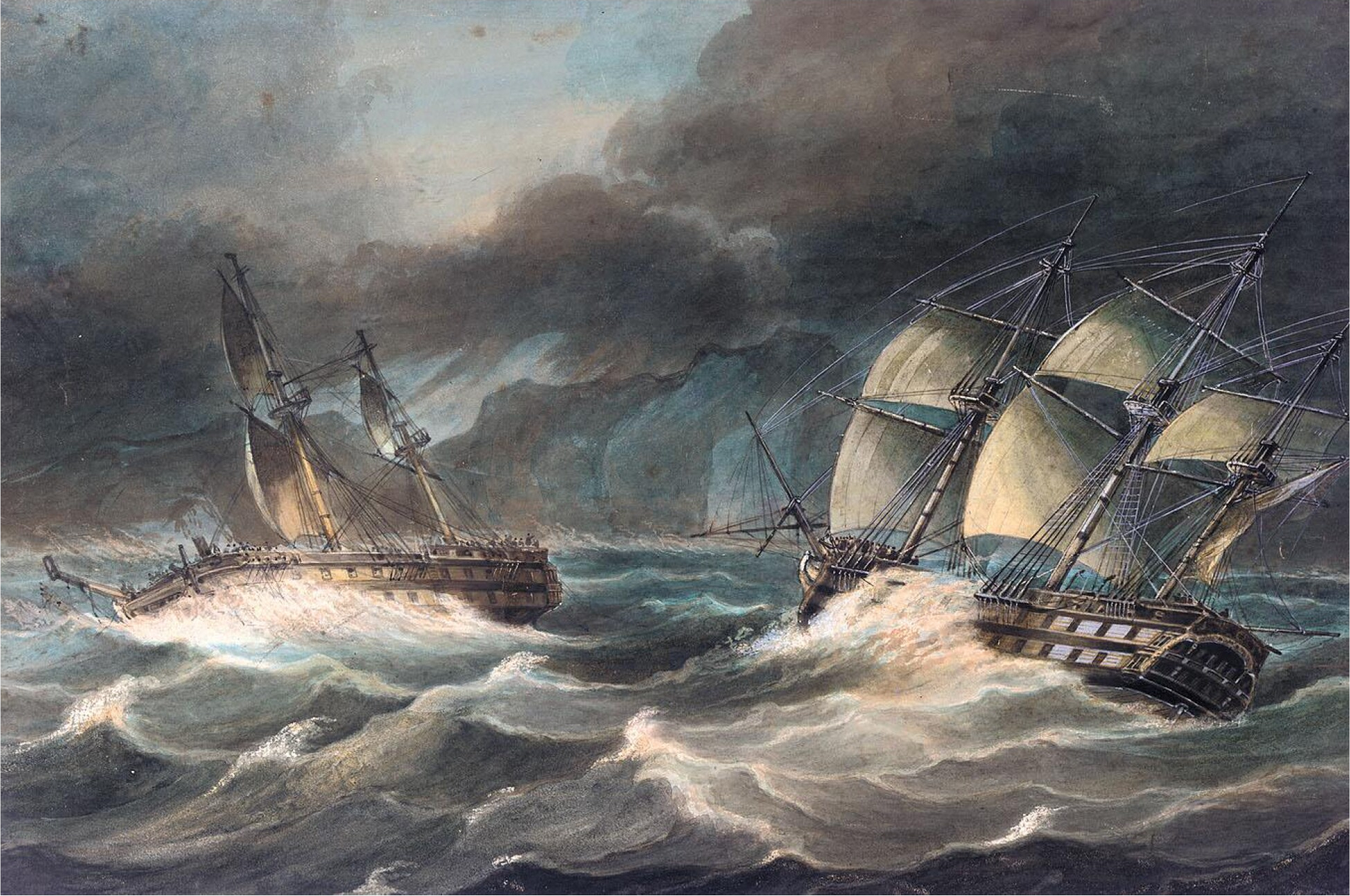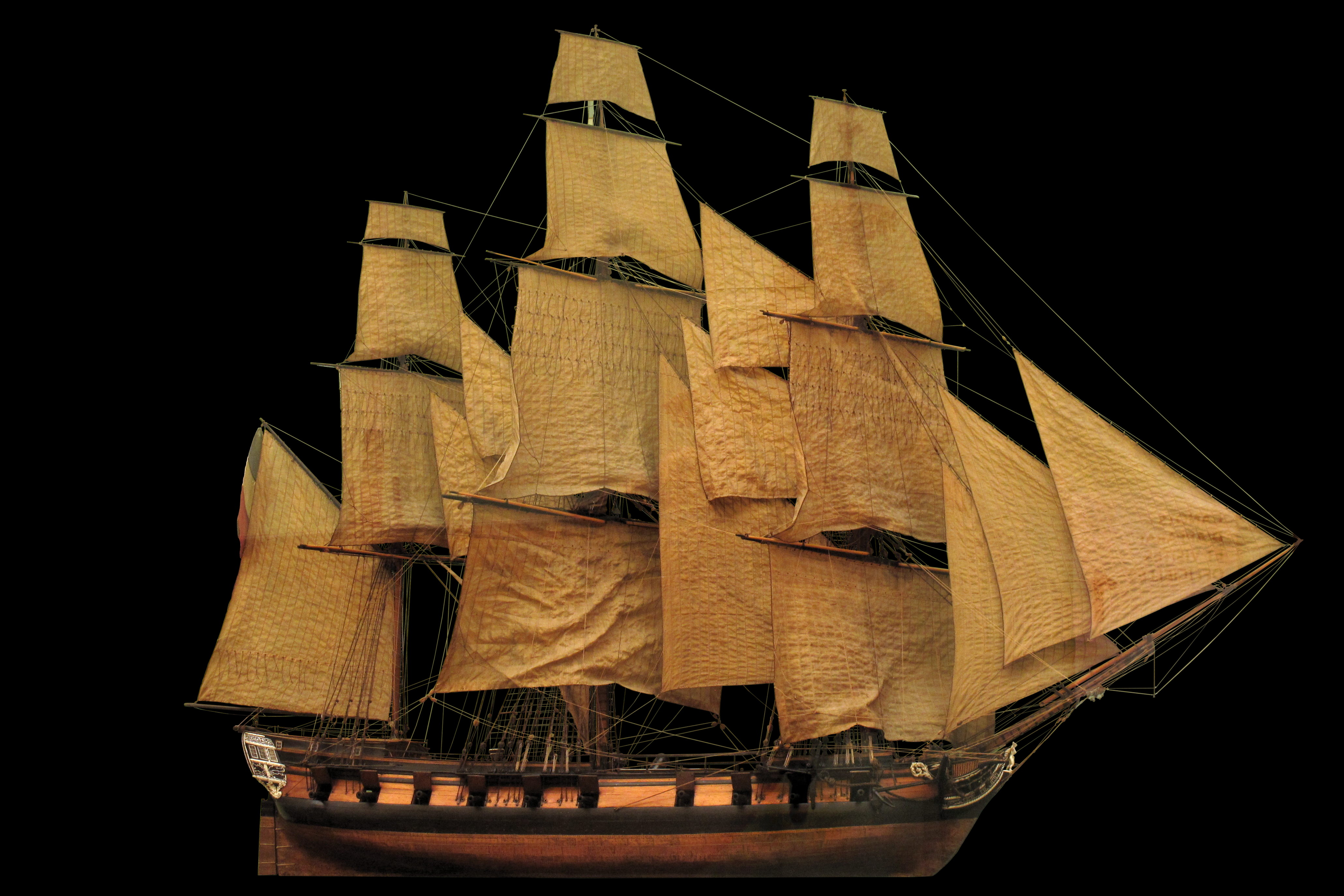|
Sir Edward Berry
Rear admiral (Royal Navy), Rear-Admiral Sir Edward Berry, 1st Baronet, Order of the Bath, KCB (17 April 1768 – 13 February 1831) was a British Royal Navy officer primarily known for his role as flag captain of Horatio Nelson, Rear Admiral Horatio Nelson's ship HMS Vanguard (1787), HMS ''Vanguard'' at the Battle of the Nile, prior to his knighthood in 1798. He had a long and prestigious naval career and also commanded HMS Agamemnon (1781), HMS ''Agamemnon'' at the Battle of Trafalgar. Early life and naval career Berry was born in 1768, the son of a London merchant who died at an early age leaving a widow, five daughters and two sons in perilous financial circumstances. His early education was provided by his uncle, the Reverend Titus Berry, in Norwich. It was under the patronage of one of Titus Berry's former pupils Constantine Phipps, 2nd Baron Mulgrave, Lord Mulgrave, that in 1779 Berry entered the Navy as a volunteer aboard the , at the age of 10. Service in the French Revo ... [...More Info...] [...Related Items...] OR: [Wikipedia] [Google] [Baidu] |
Rear Admiral (Royal Navy)
Rear admiral (RAdm) is a flag officer rank of the Royal Navy. It is immediately superior to commodore and is subordinate to vice admiral. It is a two-star rank and has a NATO ranking code of OF-7. The equivalent rank in the British Army and Royal Marines is major-general; and in the Royal Air Force it is air vice-marshal. History The rank originated in the 17th century, in the days of naval sailing squadrons when each naval squadron would be assigned an admiral Admiral is one of the highest ranks in many navies. In the Commonwealth nations and the United States, a "full" admiral is equivalent to a "full" general in the army or the air force. Admiral is ranked above vice admiral and below admiral of ... as its head. The admiral would command from the centre vessel and direct the activities of the squadron. The admiral would in turn be assisted by a vice admiral, who commanded the lead ships which would bear the brunt of a naval battle. In the rear of the naval sq ... [...More Info...] [...Related Items...] OR: [Wikipedia] [Google] [Baidu] |
HMS Vanguard (1787)
HMS ''Vanguard'' was a 74-gun third-rate ship of the line of the Royal Navy, launched on 6 March 1787 at Deptford.Lavery, ''Ships of the Line'' vol.1, p180. She was the sixth vessel to bear the name. In December 1797, Edward Berry, Captain Edward Berry was appointed flag captain, flying Rear Admiral Sir Horatio Nelson's flag. French Revolutionary Wars On 27 November 1793, the ships of a squadron under the command of Captain Thomas Pasley of captured French corvette Blonde (1781), ''Blonde''. At the time of her capture ''Blonde'' was armed with 28 guns and had a crew of 210 men under the command of Citizen Gueria. A subsequent prize money notice listed the vessels that shared in the proceeds as ''Bellerophon'', ''Vanguard'', , , and . In 1798 Nelson was detached into the Mediterranean by John Jervis, 1st Earl of St Vincent, Earl St. Vincent with , , , , and . They sailed from Gibraltar on 9 May and on 12 May were struck by a violent gale in the Gulf of Lion that carried away ... [...More Info...] [...Related Items...] OR: [Wikipedia] [Google] [Baidu] |
Action Of 18 August 1798
The action of 18 August 1798 was a minor naval engagement of the French Revolutionary Wars, fought between the British fourth rate ship HMS ''Leander'' and the French ship of the line ''Généreux''. Both ships had been engaged at the Battle of the Nile three weeks earlier, in which a British fleet under Rear-Admiral Sir Horatio Nelson had destroyed a French fleet at Aboukir Bay on the Mediterranean coast of Egypt. ''Généreux'' was one of only four French ships to survive the battle, while ''Leander'' had been detached from the British fleet by Nelson on 6 August. On board, Captain Edward Berry sailed as a passenger, charged with carrying despatches to the squadron under Earl St Vincent off Cadiz. On 18 August, while passing the western shore of Crete, ''Leander'' was intercepted and attacked by ''Généreux'', which had separated from the rest of the French survivors the day before. Captain Thomas Thompson on ''Leander'' initially tried to escape the much larger French s ... [...More Info...] [...Related Items...] OR: [Wikipedia] [Google] [Baidu] |
Corvette
A corvette is a small warship. It is traditionally the smallest class of vessel considered to be a proper (or " rated") warship. The warship class above the corvette is that of the frigate, while the class below was historically that of the sloop-of-war. The modern roles that a corvette fulfills include coastal patrol craft, missile boat and fast attack craft. These corvettes are typically between 500 and 2,000 tons. Recent designs of corvettes may approach 3,000 tons and include a hangar to accommodate a helicopter, having size and capabilities that overlap with smaller frigates. However unlike contemporary frigates, a modern corvette does not have sufficient endurance or seaworthiness for long voyages. The word "corvette" is first found in Middle French, a diminutive of the Dutch word ''corf'', meaning a "basket", from the Latin ''corbis''. The rank " corvette captain", equivalent in many navies to " lieutenant commander", derives from the name of this type of ship. The ... [...More Info...] [...Related Items...] OR: [Wikipedia] [Google] [Baidu] |
Sir Thomas Hardy, 1st Baronet
Vice-Admiral Sir Thomas Masterman Hardy, 1st Baronet, GCB (5 April 1769 – 20 September 1839) was a Royal Navy officer who served in the French Revolutionary and Napoleonic Wars. He took part in the Battle of Cape St. Vincent in February 1797, the Battle of the Nile in August 1798 and the Battle of Copenhagen in April 1801 during the French Revolutionary Wars. Hardy served as flag captain to Vice-Admiral Lord Nelson, and commanded HMS ''Victory'' at the Battle of Trafalgar in October 1805 during the Napoleonic Wars. Nelson was shot as he paced the decks with Hardy, and as he lay dying, Nelson's famous remark of "Kiss me, Hardy" was directed at him. Hardy went on to become First Naval Lord in November 1830 and in that capacity refused to become a Member of Parliament and encouraged the introduction of steam warships. Early life Born the second son of Joseph Hardy and Nanny Hardy (née Masterman) at Kingston Russell House in Long Bredy (or according to some sources in W ... [...More Info...] [...Related Items...] OR: [Wikipedia] [Google] [Baidu] |
French Ship Orient (1791)
''Orient'' was an 118-gun ship of the line of the French Navy best known for her role as flagship of Vice-Admiral François-Paul Brueys d'Aigalliers' fleet at the Battle of the Nile on 1 August 1798, and for her spectacular destruction that day when her magazine exploded. The event was commemorated by numerous poems and paintings. Prior to its destruction, ''Orient'' was one of the largest warships in the world. Career The ship was laid down in Toulon, and launched on 20 July 1791 under the name ''Dauphin Royal''. In September 1792, after the advent of the French First Republic, and not yet commissioned, she was renamed ''Sans-Culotte'', in honour of the Sans-culottes. On 14 March 1795, she took part in the Battle of Genoa as flagship of Rear Admiral Martin. She covered the rear of the French line, exchanging fire with and , but lost contact with her fleet during the night and was thus prevented from taking further part in the action. In May 1795, ''Sans-Culotte'' was a ... [...More Info...] [...Related Items...] OR: [Wikipedia] [Google] [Baidu] |
Langrage
Canister shot is a kind of anti-personnel artillery ammunition. It has been used since the advent of gunpowder-firing artillery in Western armies, and saw particularly frequent use on land and at sea in the various wars of the 18th and 19th century. Canister is still used today in modern artillery. Description Canister shot consists of a closed metal cylinder typically loosely filled with round lead or iron balls packed with sawdust to add more solidity and cohesion to the mass and to prevent the balls from crowding each other when the round was fired. The canister itself was usually made of tin, often dipped in a lacquer of beeswax diluted with turpentine to prevent corrosion of the metal. Iron was substituted for tin for larger-caliber guns. The ends of the canister were closed with wooden or metal disks. A cloth cartridge bag containing the round's gunpowder used to fire the canister from the gun barrel could be attached to the back of the metal canister for smaller cali ... [...More Info...] [...Related Items...] OR: [Wikipedia] [Google] [Baidu] |
Edward Berry And Nelson
Edward is an English male name. It is derived from the Anglo-Saxon name ''Ēadweard'', composed of the elements '' ēad'' "wealth, fortunate; prosperous" and '' weard'' "guardian, protector”. History The name Edward was very popular in Anglo-Saxon England, but the rule of the Norman and Plantagenet dynasties had effectively ended its use amongst the upper classes. The popularity of the name was revived when Henry III named his firstborn son, the future Edward I, as part of his efforts to promote a cult around Edward the Confessor, for whom Henry had a deep admiration. Variant forms The name has been adopted in the Iberian peninsula since the 15th century, due to Edward, King of Portugal, whose mother was English. The Spanish/Portuguese forms of the name are Eduardo and Duarte. Other variant forms include French Édouard, Italian Edoardo and Odoardo, German, Dutch, Czech and Romanian Eduard and Scandinavian Edvard. Short forms include Ed, Eddy, Eddie, Ted, Teddy and Ned. ... [...More Info...] [...Related Items...] OR: [Wikipedia] [Google] [Baidu] |





